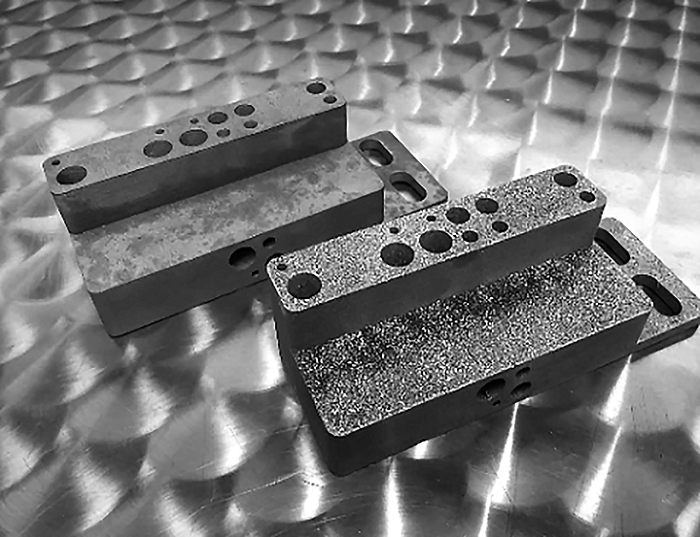ASTM F3301 Standard for Post-Processing of Additive Manufactured Metals
The ASTM F3301 standard is a pivotal development in the additive manufacturing (AM) and 3D printing industry. This standard focuses on post-processing treatments, which are crucial steps that ensure the final properties of AM parts meet design specifications and performance requirements.
Post-processing encompasses a wide range of techniques aimed at refining the surface quality and mechanical properties of AM components. These processes can include heat treatment, machining, grinding, sandblasting, and more. The ASTM F3301 standard provides guidance on how to apply these treatments in a manner that preserves the integrity and performance of the part.
For instance, heat treatment is critical for stress relief and improving the mechanical properties of AM parts. This process involves heating the component above its critical temperature followed by cooling it down at a specific rate. The standard specifies the appropriate temperatures and cooling rates to achieve optimal results. Similarly, machining can be used to refine the surface finish or remove excess material from the part.
The standard also emphasizes the importance of proper specimen preparation for testing. This includes ensuring that samples are representative of the final product and are free from defects introduced during processing. Proper preparation is essential for accurate and reliable test results.
ASTM F3301 provides a framework for consistent quality assurance by outlining standardized procedures. It ensures that different labs, facilities, and manufacturers can achieve comparable outcomes, enhancing confidence in the repeatability of testing methods across various stakeholders.
The standard is particularly beneficial for industries where precision and reliability are paramount, such as aerospace, automotive, and medical devices. By adhering to ASTM F3301, organizations can ensure that their AM parts meet stringent quality standards and regulatory requirements.
One of the key benefits of this standard is its role in promoting interoperability between different manufacturers and testing facilities. This interoperability allows for a more seamless supply chain and streamlines the certification process for new materials and processes.
Scope and Methodology
| Aspect | Description |
|---|---|
| Standard Practices for Post-Processing | The standard outlines best practices for heat treatment, machining, grinding, sandblasting, and other post-processing techniques. |
| Representative Specimen Preparation | Guidelines on how to prepare specimens that accurately represent the final product. |
| Quality Assurance Procedures | Steps for ensuring consistent quality across different processing methods and facilities. |
| Testing Parameters | Details on the test parameters, including temperature ranges, cooling rates, and machining specifications. |
| Acceptance Criteria | The criteria used to determine if a post-processed part meets the required standards. |
The ASTM F3301 standard covers various aspects of post-processing techniques for AM metals. It provides specific guidelines on how to apply these techniques in a way that ensures consistent quality and performance across different manufacturers and facilities. This comprehensive approach helps ensure that the final products meet stringent quality standards and regulatory requirements.
Industry Applications
The ASTM F3301 standard is widely applicable across multiple industries, particularly those where precision and reliability are critical. Aerospace manufacturers use AM to produce lightweight, high-strength components for aircraft structures. By adhering to the ASTM F3301 standard, they can ensure that their parts meet stringent quality standards and regulatory requirements.
In the automotive industry, AM is used to create complex, lightweight parts for vehicles. The standard helps ensure that these parts are produced consistently and reliably, meeting design specifications and performance requirements. This consistency is crucial in an industry where even minor variations could lead to significant safety issues.
The medical device sector also benefits from the ASTM F3301 standard. AM allows for the production of customized implants with intricate geometries that can better fit individual patients' needs. By following this standard, manufacturers can ensure that their products are safe and effective, meeting regulatory standards like those set by the FDA.
The standard is also valuable in industries where parts need to withstand extreme conditions, such as oil and gas exploration or space travel. In these environments, reliability and durability are paramount, and the ASTM F3301 ensures that AM parts meet these stringent requirements.
Quality and Reliability Assurance
The ASTM F3301 standard plays a crucial role in ensuring the quality and reliability of AM metals. By providing specific guidelines on post-processing techniques, it helps manufacturers achieve consistent results across different facilities and processes. This consistency is essential for maintaining high-quality standards and meeting regulatory requirements.
One of the key aspects of the standard is its emphasis on proper specimen preparation. Specimen preparation ensures that samples are representative of the final product and free from defects introduced during processing. This approach enhances the accuracy and reliability of test results, which is critical in ensuring that the final products meet design specifications and performance requirements.
The standard also outlines quality assurance procedures that help manufacturers ensure consistent quality across different processes. These procedures include regular calibration of equipment, standardized operating procedures, and rigorous inspection protocols. By following these guidelines, manufacturers can minimize variability and improve the overall consistency of their AM parts.
Testing parameters specified in the ASTM F3301 standard are crucial for ensuring that post-processed parts meet the required standards. These parameters include temperature ranges, cooling rates, and machining specifications. By adhering to these parameters, manufacturers can ensure that their parts exhibit the desired mechanical properties and surface quality.
The acceptance criteria outlined in the standard provide clear guidelines on how to determine if a post-processed part meets the required standards. These criteria help ensure that only products that meet the specified requirements are released for use. This approach enhances confidence in the reliability of AM components, which is critical in industries where precision and safety are paramount.





